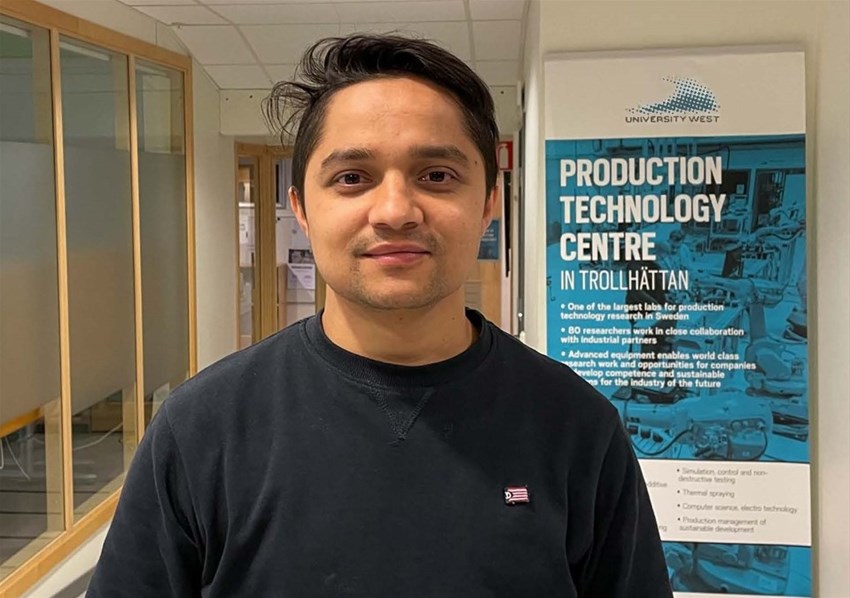Pradip's advanced simulation model provides deeper understanding of the additive manufacturing process
06 Nov 2023
For nearly a century, gas metal arc has been successfully used in metal fusion process. In recent years, this technology is making its way into the world of 3D printing, promising exciting advancements in additive manufacturing. Pradip Aryal shows in his doctoral thesis, how an advanced physics-based simulation model provides deeper understanding of the process, unlocking a world of novel applications.

“Today, the gas metal arc based additive manufacturing is particularly used for production of large-scale metallic components like propellers, turbine blades, and sometime even entire bridge structures. This technology is gaining significant industrial attention due to its high productivity, which is often required in practical production to reduce the lead time and overall costs”, says Pradip Aryal, a recent Ph.D. graduate in Production Technology, University West.
“Despite its promise, this technology can be quite intricate, often resulting in various material defects during the production process. A simulation model thus helps in both the process understanding and mechanism behind defect formation, while also offering effective solutions for addressing and mitigating these issues”, says Pradip.
Until recently, advanced predictive simulation models were lacking, mainly due to the oversimplification of the underlying physics within these simulation models.
A comprehensive simulation model
“In my research, I've dedicated efforts in developing a more comprehensive simulation model, taking significant steps towards achieving a truly predictive model”, explains Pradip.
Simulation models are increasingly becoming an invaluable tool for the manufacturing industry. By simulating the production process in advance, it is possible to anticipate potential defects in additive manufacturing process. This not only saves time and money but also significantly reduces material waste.
“To assess the reliability of the model, I conducted a series of physical experiments in parallel. The results showed that the simulation model can predict, with a high degree of certainty, how the process parameters effect the quality of the finished component.”
Tailoring specific material properties
“In addition the simulation model offers the exciting potential to tailor specific material properties in the final product. This opens completely new opportunities for industry to further leverage the gas metal arc to an even greater extent.”
“Exciting opportunities lie ahead for expanding the model's capabilities. These include delving deeper into various aspects of the process such as understanding porosities and cracking defects, and fine-tuning process parameters for precise control of material properties. It is something I would like to explore further in collaboration with a company.”
Read Pradip Aryal's doctoral thesis "Metal fusion using pulsed Gas Metal Arc: melt pool modeling and CFD simulation":
Contact: Pradip Aryal, Doctor in Production Engineering, pradip.aryal@hv.se, +46 76 281 82 87


